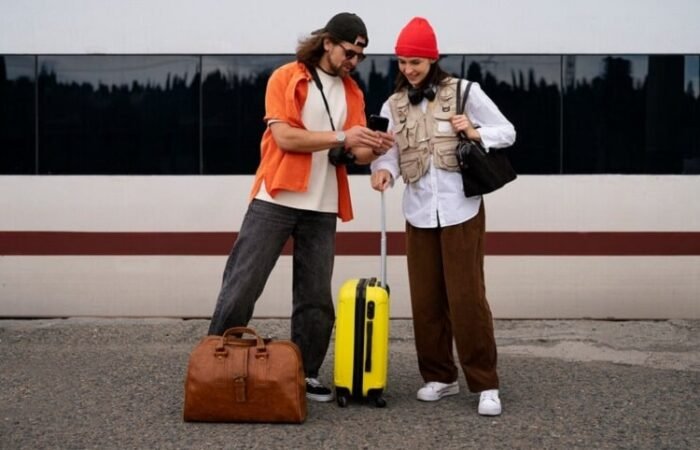Have you ever caught yourself judging someone for being an obnoxious “tourist” while on vacation? Or have you been on the receiving end of that judgemental gaze, feeling out of place and wishing you could blend in better?
The truth is, there’s a world of difference between being a tourist and being a traveler, and it’s not just about semantics. It’s about embracing different mindsets, motivations, and approaches to exploring the world around you.
Key Takeaways
- Tourists and travelers differ in their mindsets, behaviors, and interactions with local cultures.
- Travelers prioritize immersive experiences and cultural exchange, while tourists often stick to familiar comforts.
- Understanding the distinctions can help you make conscious choices about how you want to experience your travels.
Definition of a Tourist vs. Traveler
Alright, let’s start with the basics. A tourist is typically defined as someone who goes on a tour or travels for pleasure, while a traveler is someone who makes a journey to explore and experience new places and cultures.
But it’s not just about the dictionary definition – there are distinct characteristics that set these two types of explorers apart.
Appearance and Behavior
- Tourists often stick out like a sore thumb, dressed in their most comfortable (but culturally insensitive) outfits, snapping selfies at every landmark, and generally drawing attention to themselves.
- Travelers, on the other hand, make an effort to blend in with the local culture. They dress with a balance of style, comfort, and respect for local norms, and they observe their surroundings with a keen eye rather than a camera flash.
Culinary Experiences
When it comes to food, tourists tend to play it safe and stick to the familiar comfort foods they know and love. They’ll seek out the nearest McDonald’s or opt for the hotel’s all-inclusive dining options.
Travelers, however, see trying local cuisines as a crucial part of immersing themselves in the culture. They’ll happily indulge in street food, sip local wines, and experiment with flavors they’ve never encountered before.
Interactions with Locals
Tourists often keep to themselves or interact solely with their travel companions and tour guides. Their exposure to the local culture is limited to the popular tourist sights and attractions.
Travelers, on the other hand, actively seek out opportunities to converse with locals. They’ll strike up conversations, ask for insider tips, and discover hidden gems that most tourists would never stumble upon.
Language Skills
Let’s be real – tourists rarely make an effort to learn even the most basic phrases in the local language. They expect everyone to speak English (or their native tongue) and get flustered when communication barriers arise.
Travelers, however, understand that learning a few key phrases can go a long way in enhancing their interactions and showing respect for the local culture. They’ll make an effort to learn the basics, even if they butcher the pronunciation.
Shopping Habits
Tourists are often easy targets for overpriced, mass-produced souvenirs. They’ll buy the first “I [Insert City]” t-shirt they see without batting an eye.
Travelers, on the other hand, take the time to seek out authentic, locally-made goods. They’ll haggle for the best prices and support local artisans and small businesses, bringing home meaningful keepsakes that tell a story.
Navigation Techniques
Tourists rely heavily on maps, guidebooks, and their fear of getting lost. They’ll follow the well-trodden tourist trails and stick to the safety of organized tours.
Travelers, however, see getting lost as an opportunity for adventure and discovery. They’ll trust their instincts, wander off the beaten path, and embrace the thrill of stumbling upon unexpected gems.
Language Skills
Let’s be real – tourists rarely make an effort to learn even the most basic phrases in the local language. They expect everyone to speak English (or their native tongue) and get flustered when communication barriers arise.
Travelers, however, understand that learning a few key phrases can go a long way in enhancing their interactions and showing respect for the local culture. They’ll make an effort to learn the basics, even if they butcher the pronunciation.
Shopping Habits
Tourists are often easy targets for overpriced, mass-produced souvenirs. They’ll buy the first “I [Insert City]” t-shirt they see without batting an eye.
Travelers, on the other hand, take the time to seek out authentic, locally-made goods. They’ll haggle for the best prices and support local artisans and small businesses, bringing home meaningful keepsakes that tell a story.
Motivations and Mindsets
At the core of it all, the motivations and mindsets of tourists and travelers differ greatly.
| Tourists | Travelers |
|---|---|
| Focused on checking off a list of popular sights | Interested in immersing themselves in the local culture |
| Seeking comfort and convenience | Embracing unfamiliar experiences and stepping out of their comfort zones |
| Prioritizing relaxation and indulgence | Prioritizing personal growth and authentic connections |
| Capturing the perfect Instagram-worthy shots | Creating lasting memories and gaining a deeper understanding of the world |
Advantages and Disadvantages of Each Approach
Now, let’s be clear – there’s no right or wrong way to travel. Both approaches have their own pros and cons:
- Tourists: The advantages of being a tourist include convenience, comfort, and a more relaxed pace. You don’t have to worry about navigating unfamiliar territories or dealing with language barriers. The downside? You miss out on truly immersive and transformative experiences.
- Travelers: As a traveler, you’ll gain a deeper appreciation for the local culture, create lasting connections, and come home with a greater sense of personal growth. However, it can also be more challenging, overwhelming, and unpredictable.
Conclusion
At the end of the day, it’s up to you to decide how you want to approach your travels. There’s no need to fit neatly into the “tourist” or “traveler” box – perhaps you’re a little bit of both, or you oscillate between the two depending on the destination.
The key is to be mindful of the differences and make conscious choices that align with the experiences you want to have. Embrace the aspects of being a tourist that bring you joy and comfort, but don’t be afraid to step out of your comfort zone and embark on the transformative journey of a traveler.
Because at the end of the day, it’s not about the labels – it’s about creating unforgettable memories and truly seeing the world through new eyes.








No Comment! Be the first one.